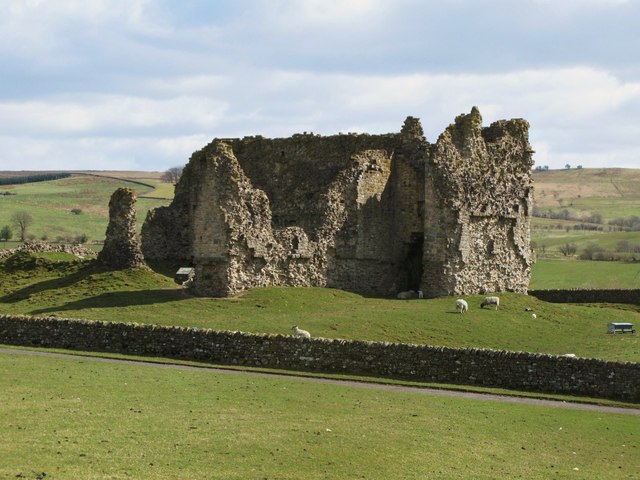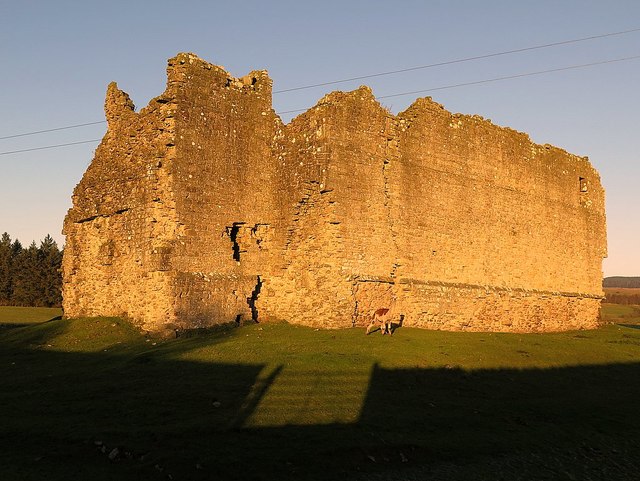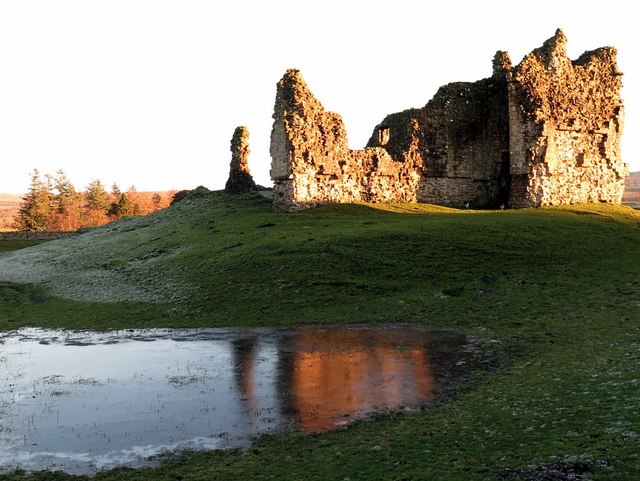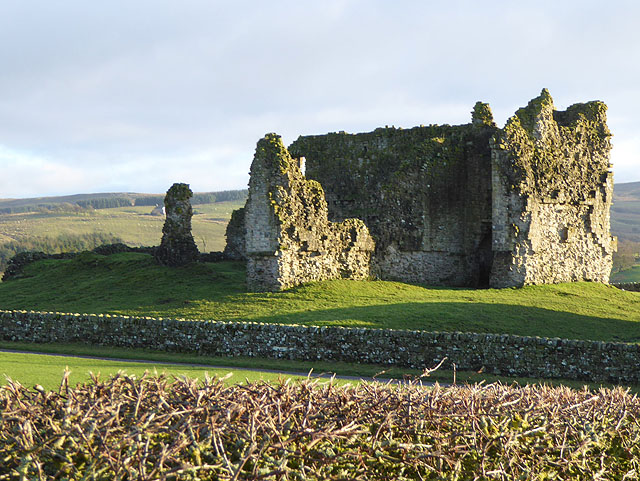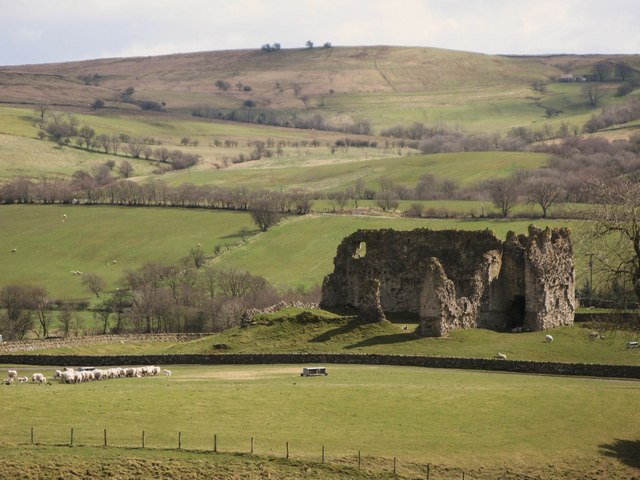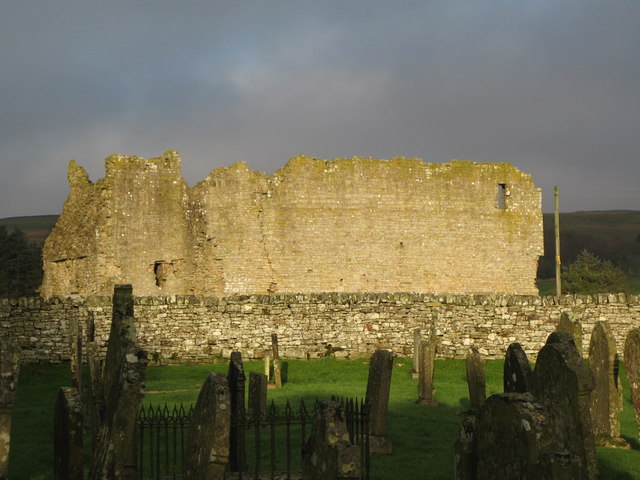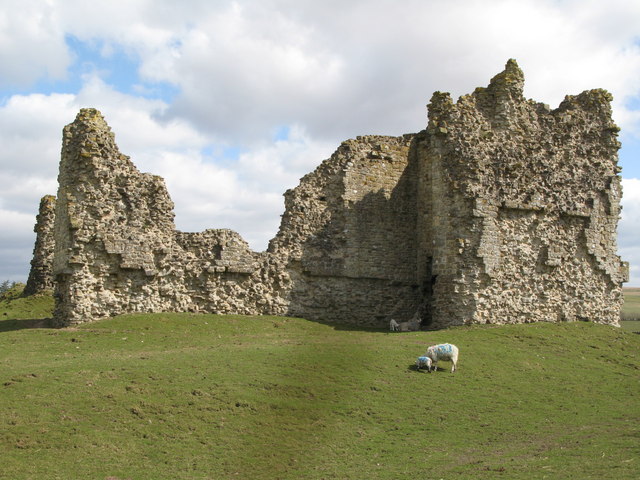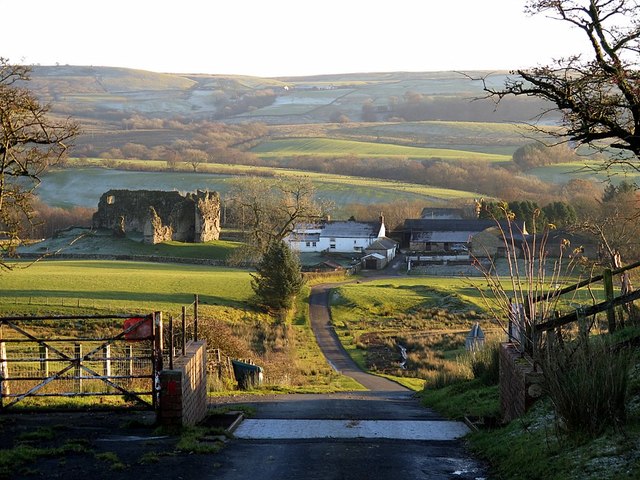Topics > Bewcastle > Bewcastle Castle
Bewcastle Castle
Bewcastle Castle is a ruined castle in the parish of Bewcastle in the English county of Cumbria, a few miles from the Scottish border.
History
The first castle was built on the site of Bewcastle Roman Fort, around 1092. The castle is surrounded by a dry moat, the north and east sections of which re-use the Roman ditch. The castle was destroyed in 1173, but was rebuilt towards the end of the 14th century. It was decayed by the early 15th century when Edward IV granted it to his brother, the Duke of Gloucester, later to become King Richard III. The buildings were repaired and the gatehouse was possibly added at this time. From the late 15th century, the castle was held by the Musgrave family, until Bewcastle Castle was reputedly destroyed by Cromwell in 1641. The castle was in a state of ruin by the 17th century, and although much of the stone was removed for nearby buildings, much of the gatehouse with its internal garderobe still remains.
The element "castle" in the place-name Bewcastle probably refers to the Roman fort within which it was built, giving rise to the unusual repetition of the word in the castle name. However, the Ordnance Survey gives the name as Bew Castle.
Visit the page: Bewcastle Castle for references and further details. You can contribute to this article on Wikipedia.

from https://historicengland.org.u…
Bewcastle Roman fort, high cross shaft in St Cuthbert's churchyard, and Bew Castle medieval shell keep castle - List Entry
- "...The monument includes the earthworks and buried remains of Bewcastle Roman fort, together with an early eighth century AD high cross shaft, situated in the churchyard to the south of …
Added by
Simon Cotterill


from https://historicengland.org.u…
Bewcastle Roman fort, high cross shaft in St Cuthbert's churchyard, and Bew Castle medieval shell keep castle - List Entry
- "...The monument includes the earthworks and buried remains of Bewcastle Roman fort, together with an early eighth century AD high cross shaft, situated in the churchyard to the south of …
Added by
Simon Cotterill
